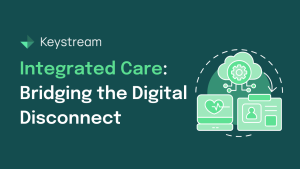27.08.2024
Optimising EPR Systems: Lessons from Léon Marchand’s Olympic Gold Medals
In my family, dinner is a sacred time. We gather around the table, savouring each moment together, with no distractions other than the delicious food before us. But on the 31st of July, our usual routine was joyfully interrupted as we crowded around the TV to watch Léon Marchand swim for Olympic gold—not once, but twice! It was a first for me; I had never followed swimming with such fervour. What truly struck me was how each stroke had its specialist swimmers, except for Marchand, who made history by winning gold in two different strokes. His ability to optimise his training to excel in both was extraordinary. While I may not be an expert in swimming, this made me reflect on what I know best: Electronic Patient Record (EPR). How can we optimise EPR systems to achieve gold-medal performance across various clinical areas?
The Vision of EPR: Getting the Right Information to the Right People
The core vision of an Electronic Patient Record system is to ensure that critical information reaches the right people precisely when they need it. However, this seemingly straightforward goal is complex. The definition of “key information” varies by clinical area—a cardiologist requires different data than an orthopaedic surgeon. Similarly, the “right people” might be a consultant in a hospital setting or a GP in the community. The timing of when they need this information also differs significantly; in acute care, the frequency and urgency are far greater than in non-acute settings.
Laying the Foundations for EPR Optimisation
Every project aims to meet this vision, but the starting points differ. In this post, we’ll explore the key pillars to consider when embarking on an EPR optimisation journey.
- Technical Readiness: Are We Prepared for Essential Upgrades?
Given my technical background, I naturally gravitate towards the importance of technical readiness. This is a vast area, encompassing not only the various EPR modules but also the underlying infrastructure and networking. Unpicking these elements can be time-consuming, but it’s crucial to establish a solid foundation for any optimisation efforts. - Operational Usage: Who Uses the EPR and How?
Another fundamental, yet often overlooked aspect, is understanding how and where the EPR is used across the services. The first step in optimisation should be enhancing the existing system. Could a targeted training campaign resolve current issues? How do we engage the right people in this process? - Governance: Is There Strong Change Governance?
Governance is often a sticking point in any project. When considering EPR optimisation, it’s crucial to address the question: How can we expect to optimise the system when even minor changes take so long to implement? Who will be responsible for leading these changes? - Financial Considerations: What Is the Budget?
While it’s often unspoken in the NHS, the budget is a critical factor. It determines which aspects of the system we can realistically target for optimisation. - Reporting and Measurement: How Do We Track the Impact of Change?
This is a personal priority for me, yet it’s frequently overlooked. How do we measure the benefits of the optimisation efforts? This should be the first question asked to ensure that we have concrete evidence of success or failure, which in turn can set precedents for future projects.
Building a Successful Optimisation Strategy
To effectively plan and deliver an EPR optimisation project, these foundational elements must be thoroughly analysed and clarified. While the goal isn’t to resolve every issue identified during this process, having a clear understanding of our strengths and weaknesses is crucial for laying a solid foundation and ensuring the project starts on the right foot.
Returning to our Olympic analogy, think of how Marchand uses the same underwater technique across different strokes. Similarly, our focus should be on strengthening the key pillars that influence various specialties and clinical areas. By ensuring these pillars are robust, we can build an EPR optimisation strategy that is not only effective but also sustainable over time. As you reflect on your own EPR optimisation efforts, which pillars do you believe are the strongest in your organisation? Where do you see the most opportunity for improvement?









